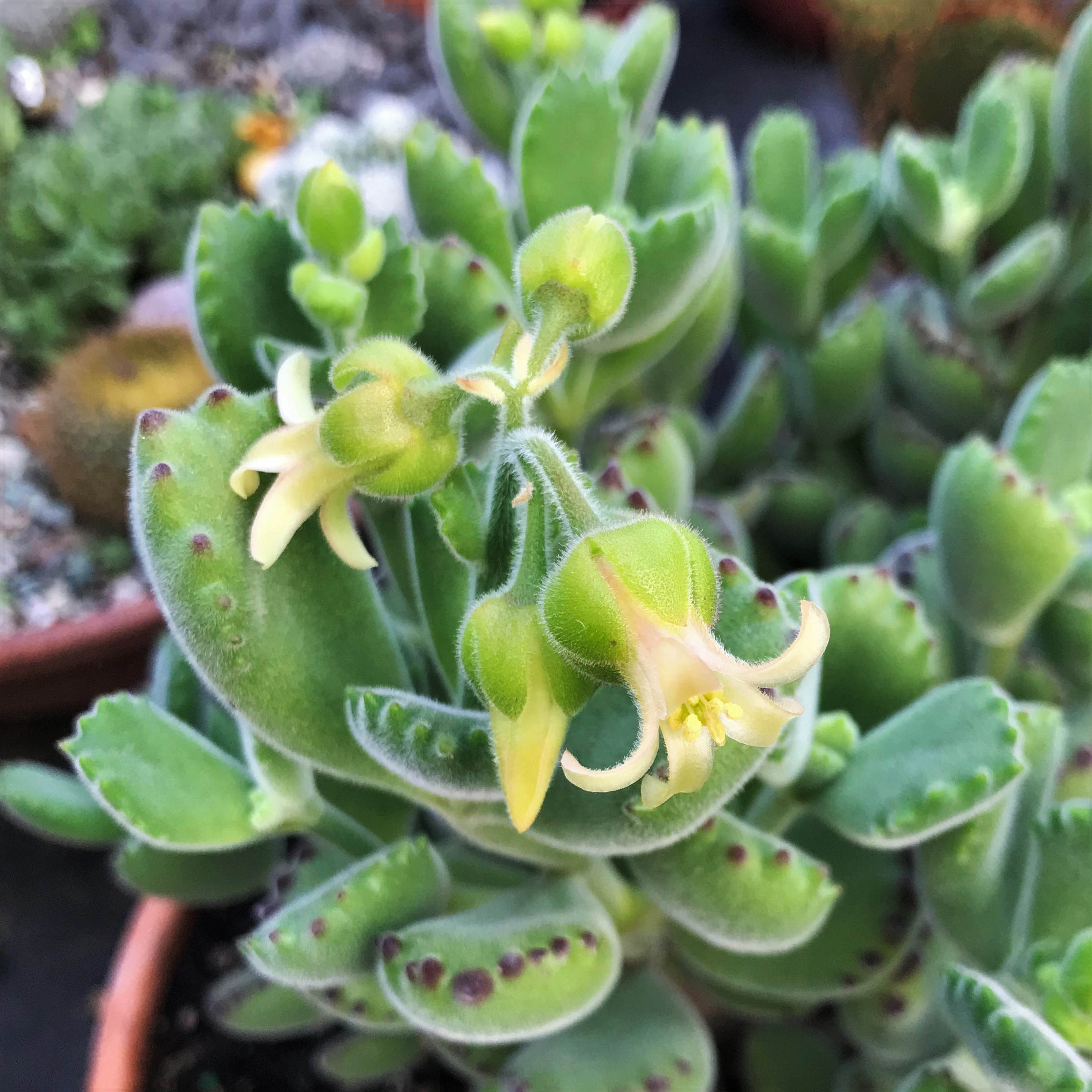

ladismithiensis has only been found in seven subpopulations and has experienced a 10% decline in population over the past 90 years. tomentosa has only been found in five subpopulations, while subsp. Īs of 2006, both subspecies are listed as vulnerable on the SANBI Red List of South African Plants, because they have only been found in small subpopulations and are threatened by habitat degradation and illegal gathering for the succulent trade. ladismithiensis is found in rocky outcrops in the southern Western Cape, between Laingsburg, Ladismith, and Muiskraal. tomentosa is found near Calitzdorp, Willowmore, and Steytlerville, in the gravely soil of arid thicket, in slopes of sheltered ravines. " ladysmithiensis" spelling used at the US Botanic Garden Ecology Habitat and conservation Ĭotyledon tomentosa is native to the semidesert Little Karoo region located in the southern parts of South Africa, from Ladismith to Steytlerville.

Another spelling variation used by the Illustrated Handbook of Succulent Plants is " ladismithensis."

#Bear paw succulent poison code#
According to Magrit Bischofberger, von Poellnitz's original spelling should be used according to Article 60.1 of the International Code of Nomenclature, which states a name should not be changed even if it contains a spelling discrepancy (i.e. This is the current accepted name of the subspecies, as listed on Plants of the World Online. ladismithiensis, retaining a different spelling of von Poellnitz's name. Toelken reclassified the taxon in 1977 as a subspecies, Cotyledon tomentosa subsp. In 1936, Karl von Poellnitz noted the conflict and gave the taxon a new name, Cotyledon ladysmithiensis, for its native range near the town of Ladismith, South Africa. heterophylla was a nomen illegitimum, because it had already been applied in 1824 by William Roxburgh to what is now called Kalanchoe lanceolata. tomentosa "to be used with great caution" as "relative characters are frequently inconstant." to which it is probably nearly allied." Schonland also cautioned that the differences he noted between C. ladismithiensis was first described in 1907 by botanist Selmar Schonland, who named it Cotyledon heterophylla. Cotyledon tomentosa was described in 1862 by William Henry Harvey, and has no synonyms.


 0 kommentar(er)
0 kommentar(er)
